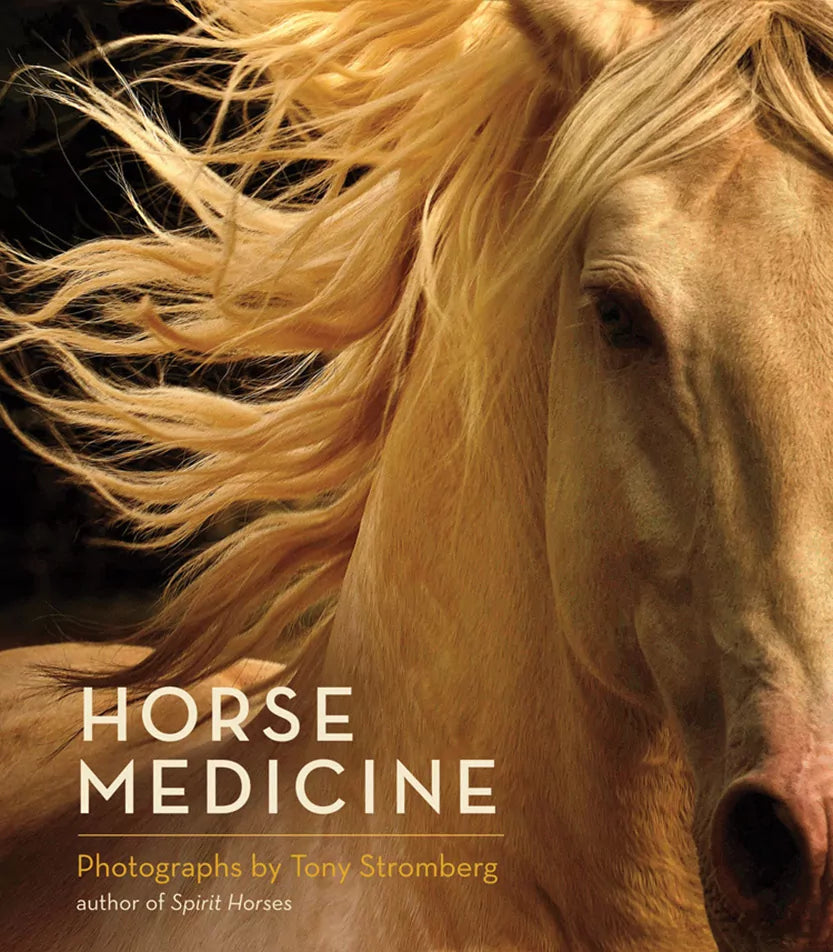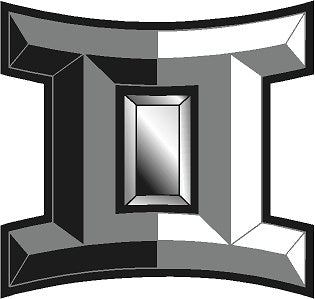1
/
of
1
New World Library
Horse Medicine By Tony Stromberg
Horse Medicine By Tony Stromberg
Regular price
$45.00
Regular price
Sale price
$45.00
Unit price
/
per
Shipping calculated at checkout.
Couldn't load pickup availability
What is it about horses that draws people in so deeply? Why is it that horses hold meaning and symbolism across cultures around the world? Why do so many of us experience horses as not just beautiful creatures but wise and healing teachers? These are some of the questions that revered equine photographer Tony Stromberg set out to answer with his best photos from the past half decade. The resulting collection more than meets Stromberg’s goal of highlighting and honoring the mysterious ways horses and humans can bring out the best, the highest, and the most powerful in one another.
A Conversation with Author and Photographer Tony Stromberg
After more than a decade as one of San Francisco’s top commercial photographers, Tony Stromberg followed an inner yearning for more space and stillness and moved to New Mexico to pursue his true passion in fine art photography of his favorite subject, the horse.
After his first two photography books, Spirit Horses and The Forgotten Horses, were published, he received innumerable emails from people praising his photos for how they capture the pure spirit, the essence of the horse. What really amazed him was that many who wrote were not horse people at all.
We hope you’ll enjoy this short interview with Stromberg, in which he talks about his creative process and passion for horses.
When did you start spending time with horses?
Only about 15 years ago. At the suggestion of a friend, I started taking lessons one day and soon realized that all my “issues” were coming up in my relationship with the horses. I realized that there was something “clean” about this relationship that I wasn’t finding in my therapeutic relationships with people. Because horses don’t have personalities in the sense that people do, they only mirror back what is authentically “you.” All of this gave me an opportunity to work on some personal areas that needed work . . . with instant feedback! Horses do not know the concept of “lying” or of pretending to be something they are not. It is a foreign concept to them and one that is antithetical to their very survival — honesty, authenticity, and presence are essential to their nature.
What makes horses different from other animals?
I think all animals have a certain wisdom that we can learn from, if we can attune ourselves to it. I think this is true of horses in particular, partly because of the nature of our relationship to them: we want to ride them; therefore to work together we have to be in communication with them from the beginning. If the relationship becomes one sided, things stop.
In spite of the common belief that animals are “lower” creatures, I think the opposite is true. They may not have the “intelligence” that we have, but they have a wisdom that is timeless, and an honesty and sincerity that are way beyond ours. They are higher beings in a sense. Henry Beston’s quote that they are “listening to voices that we cannot hear” is very true. Animals are connected to all other living things far more than we will ever be. They understand interrelatedness and interconnection. We, on the other hand, have forgotten.
Where do you go to photograph horses?
All over the place. I have photographed wild horses in Nevada, California, Wyoming, Oregon, and New Mexico. I also photograph domestic horses at breeding farms, private ranches, and horse sanctuaries. The important thing to me is that they have a lot of room to live in — not just a little stall. Someone once told me that the equivalent of a horse living almost his entire life in a stall would be a human being living his entire life in a porta-potty and being taken out for 60 minutes a day for exercise. Prisoners in federal prisons have far more freedom than this, which I think is an insane imbalance.
When you photograph horses, do you have preconceived ideas or a way you like to set up shots?
Hardly ever. I have found that the best way to get the shots I get is to just show up without any preconceived ideas. In fact, the times I have had ideas they have usually been shattered or changed almost immediately. I like to just go and experiment. I like to wait and see what happens. I like to try new things that I haven’t tried before. A lot of my best work has come from experimenting — shooting from a different angle, underexposing, deliberately shaking the camera, shooting at night with car headlights. I think it is easy to get stuck trying to make a perfect picture — and end up missing the great one that is right in front of you.
Do you have a favorite type of horse, one that you would prefer to photograph over others?
I am finding myself drawn more and more to the baroque horses — the Lusitanos, the Andalusians, the Lipizzaners, and perhaps the Friesians. And the Barbs and Arabs and Spanish Mustangs. These are the breeds that are the closest to the “original horse” of Europe and the Americas. I am crafting my workshops more and more to find and portray those horses that are the closest to the original breeds. In a way, it is like a quest to find the “source” of the best horses in this world — which I guess in a way is very similar to finding the “source” of everything, of ourselves, of the universe: the holy grail.
Tony Stromberg is the author of Horse Medicine, Spirit Horses, and The Forgotten Horses. He travels throughout the western United States and Europe in search of the elusive and mysterious spirit of the horse, attempting to capture the freedom and power of his subjects on film. He works with the US Bureau of Land Management to photograph wild horses in their natural habitats, as well as numerous wildlife sanctuaries, equine rescue organizations, and private ranches. He conducts workshops on horse photography, and his photographs appear in select galleries throughout the world. His website is www.tonystromberg.com.
Share


